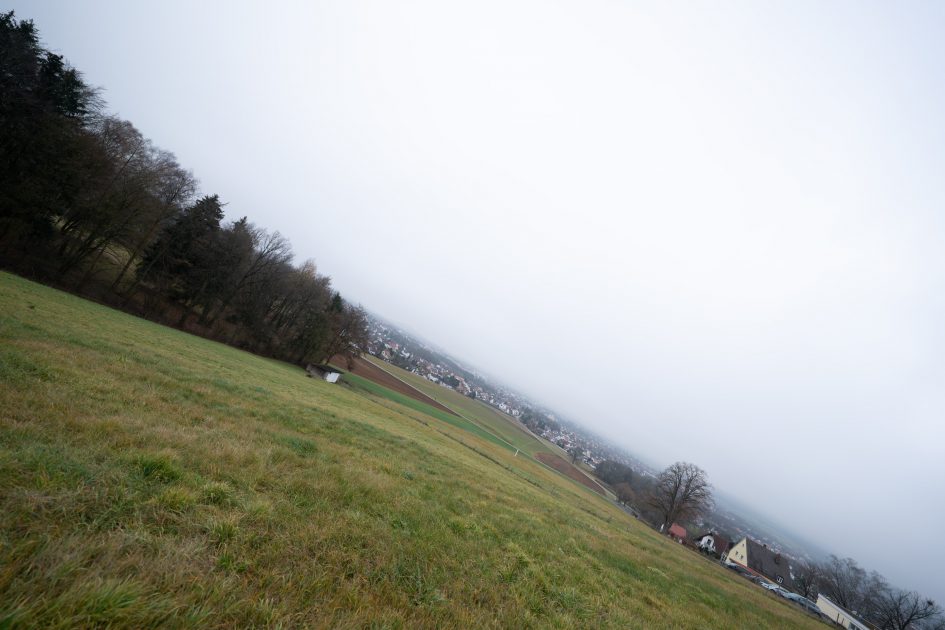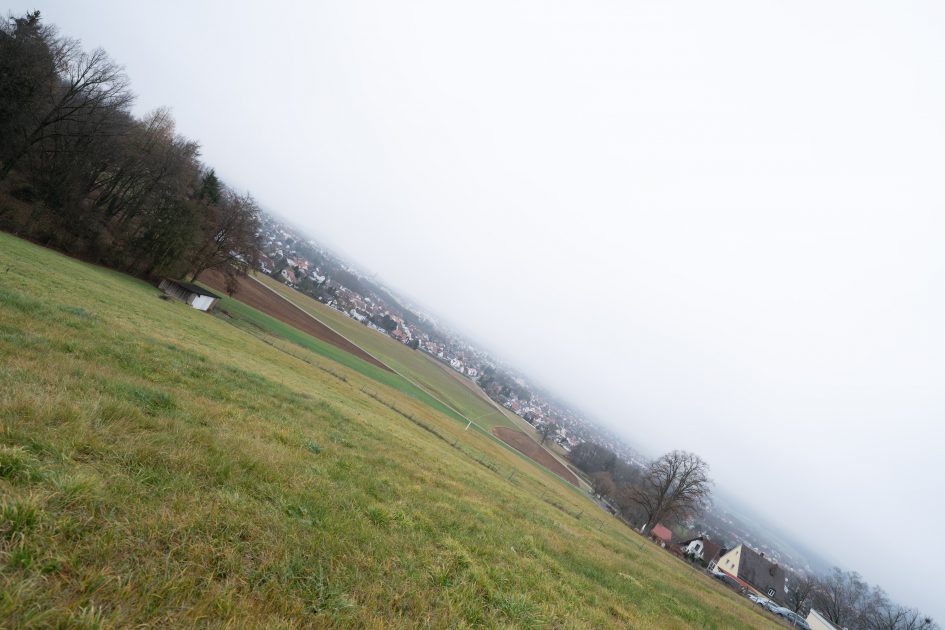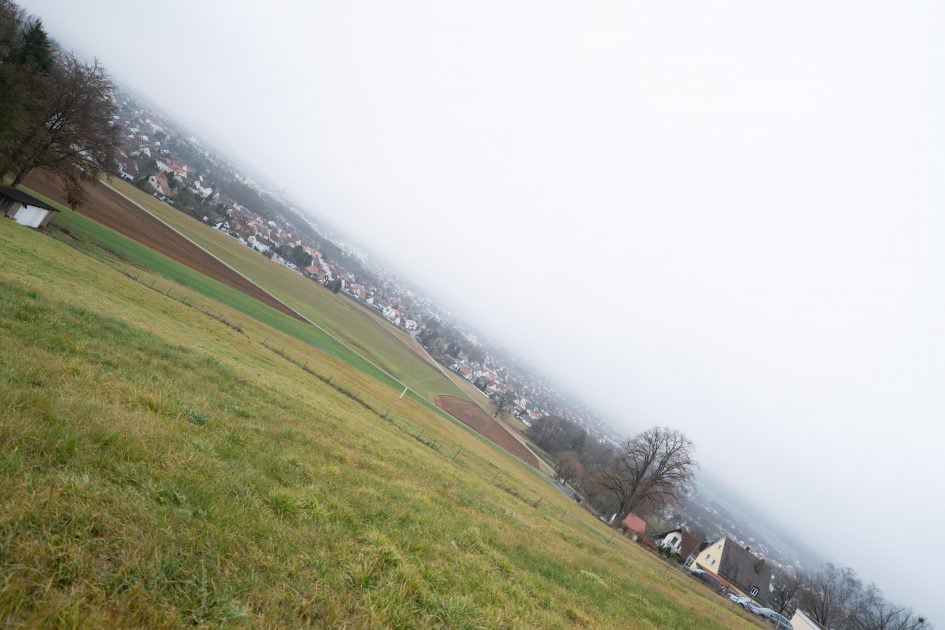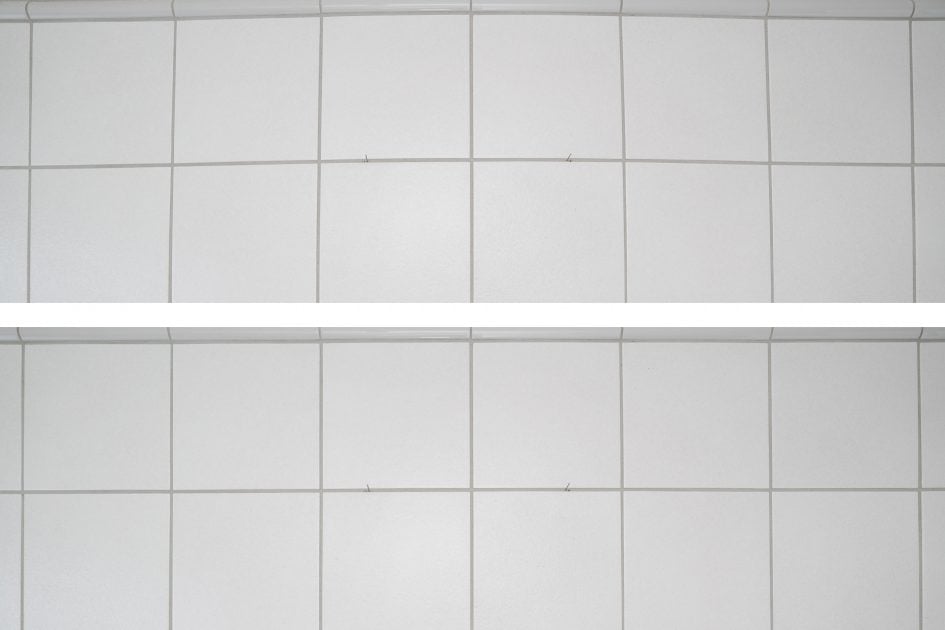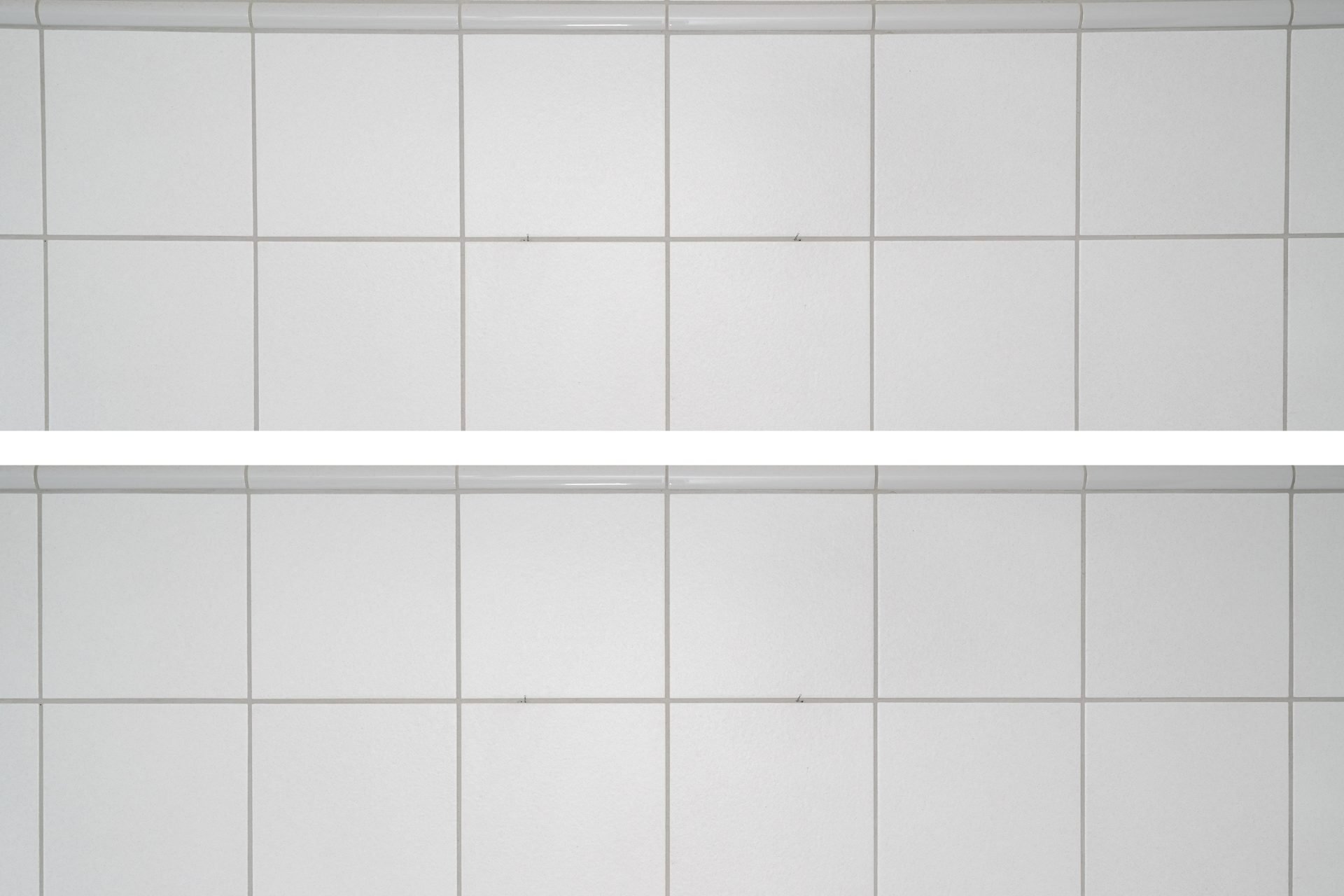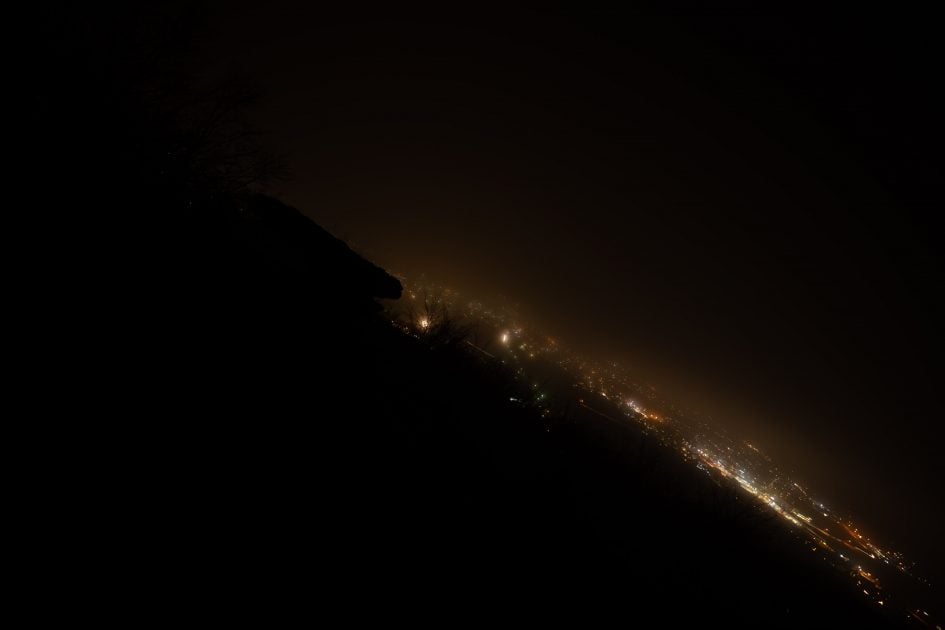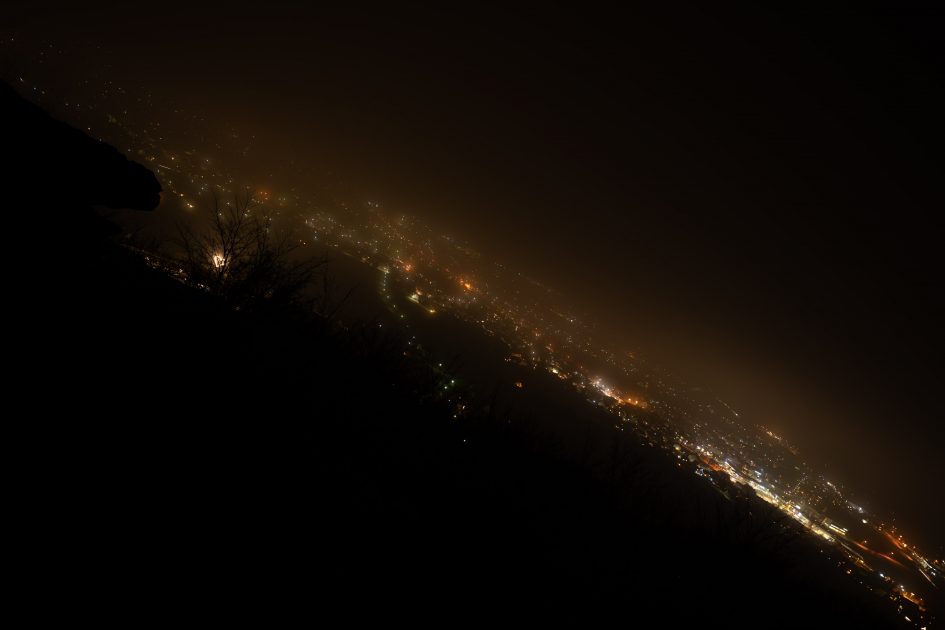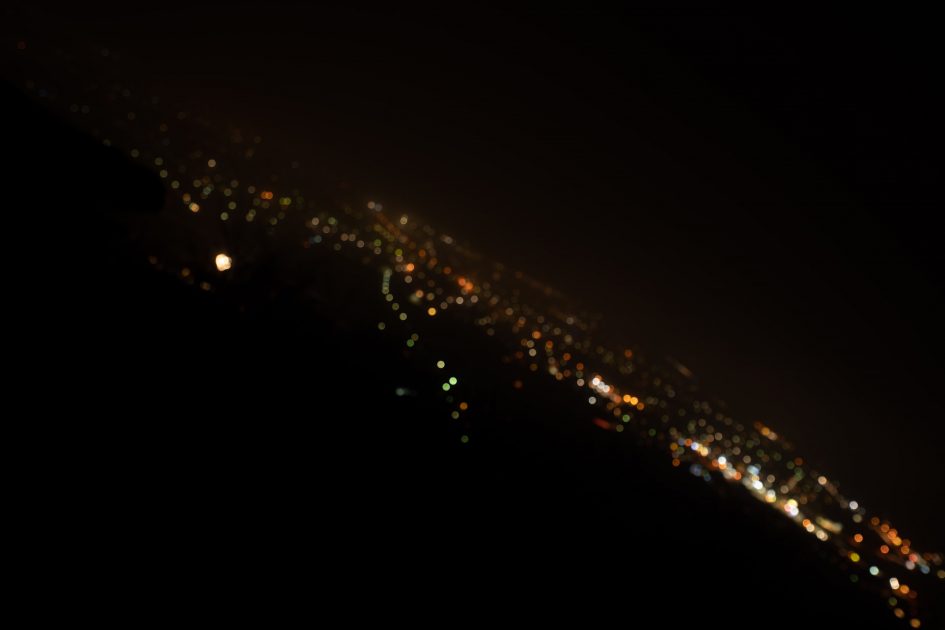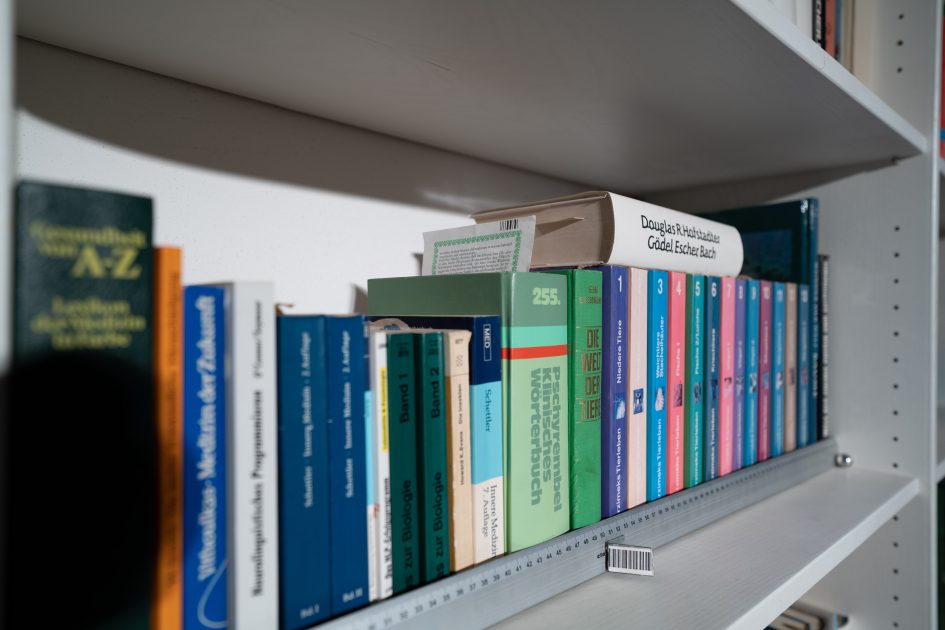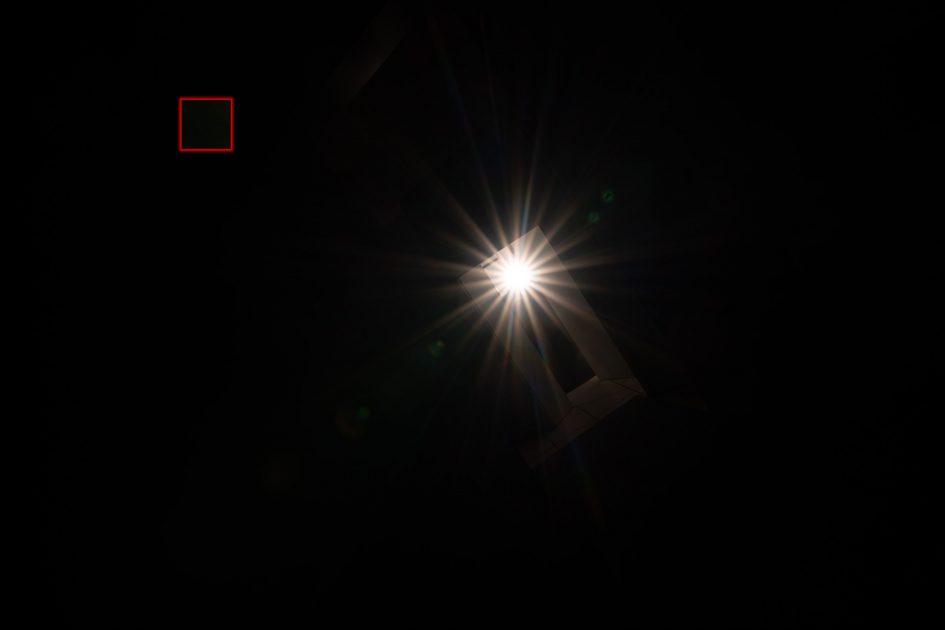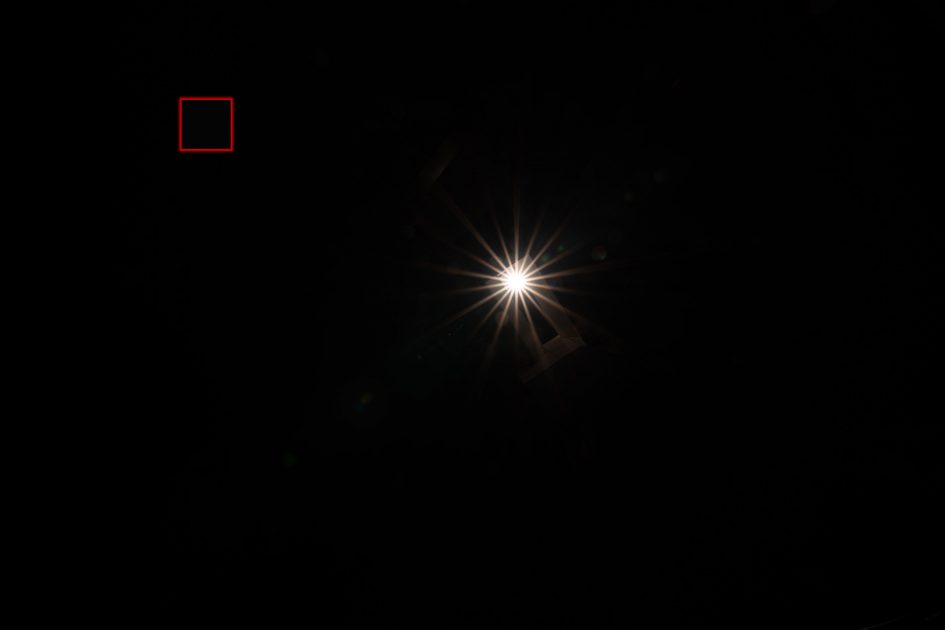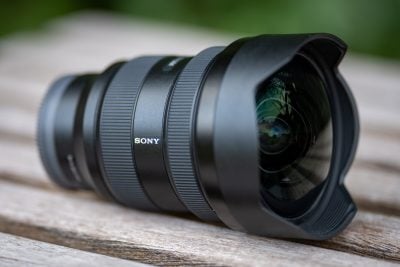Sony FE 12-24mm f2.8 GM review
-
-
Written by Thomas
Quality
Testing: Longitudinal Chromatic Aberration and focus shift
Lenses with focal ratios of f2.8 or faster are often prone to longitudinal color aberrations (loCA, a.k.a. “axial color” or “bokeh CA”). These would show up as magenta coloration in the foreground and greenish hues in the background and are not easily corrected in post-processing. The Sony shows almost no loCA with most of the coloration in the test shots below from color moiré.
Sony FE 12-24mm f2.8 GM Longitudinal Chromatic Aberration (loCA)
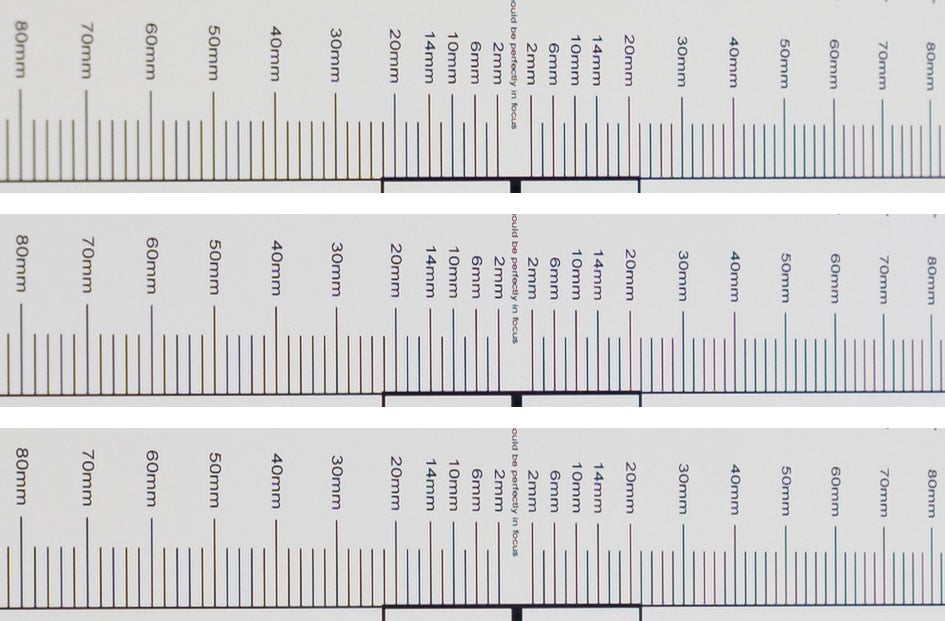
Above: 100% crops at 24mm, from top to bottom: f2.8, f4.0, f5.6; left = foreground, right = background
There’s also no focus shift to speak of. For comparison have a look at the Sigma 14-24mm f2.8 DG DN Art and Sony FE 12-24mm f4.0 G.
The following real life shot shows that the Sony f2.8 GM produces some purple fringing around high-contrast edges in the focal plane but almost no green outlining around background subjects:
Above: Sony FE 12-24mm f2.8 GM at 24mm f2.8; 100% crop; click image for 4k version, here for large original
Sharpness and contrast
Let’s have a look at the theoretical performance of the Sony FE 12-24mm f2.8 GM first and compare it to the Sigma 14-24mm f2.8 DG DN Art and Sony FE 12-24mm f4.0 G:
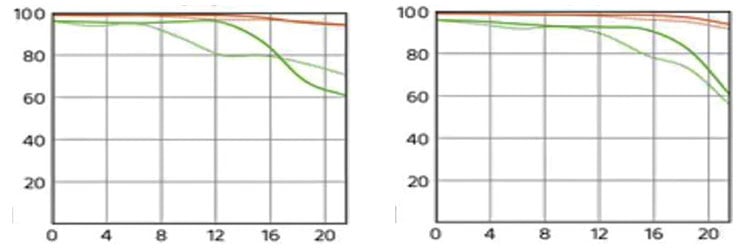
Above: MTF Sony FE 12-24mm f2.8 GM at 12mm f2.8 (left) and 24mm, f2.8 (right)
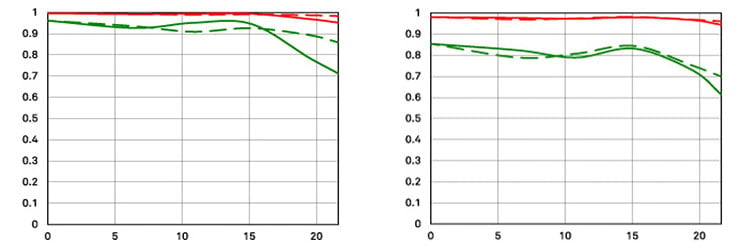
Above: MTF Sigma 14-24mm f2.8 DG DN Art at 14mm, f2.8 (left) and 24mm, f2.8 (right)
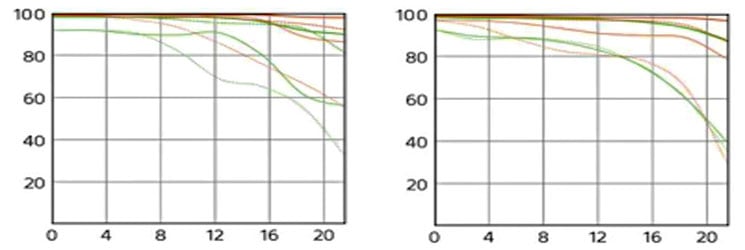
Above: MTF Sony FE 12-24mm f4.0 G at 12mm, f4.0 (left) and 24mm, f4.0 (right)
These MTF charts show the computed lens-performance of lenses wide open without influence of diffraction at 10 line-pairs/mm (red) and 30 lp/mm (green) except for the charts of the Sony FE 12-24mm f2.8 GM where the red lines show the performance at f8.0. Higher values are better (more contrast) and the closer the dotted and solid lines are together the less astigmatism (= resolution depends on the orientation of the test-pattern) the lens has. The x-axis displays the distance from the optical axis (=center of the sensor) in mm. I’ll show you the real-life performance at 4 mm (center), 13 mm (APS-C-corner), and 20 mm (FF-corner) on a 42MP Sony A7R II camera.
When comparing these charts keep in mind that the Sony FE 12-24mm f4.0 G is show here at f4.0 while the other two lenses are at a more challenging f2.8. That said the Sony f4.0 G definitely looks softer at the short end than the Sigma DN and Sony f2.8 GM. At 24mm focal length the Sony FE 12-24mm f2.8 GM looks best while the Sony f4.0 G seems to be better than the Sigma up to 10mm image height but then dropping off to soft full-frame corners.
Let’s see how this theoretical performance translates into real life results in the sharpness test based on Siemens-stars. Processing was done in Lightroom 10.1/CRAW 13.1 from RAW to Adobe Color profile with the built-in lens profile for Vignette Control and CA compensation applied. Noise-reduction is set to 0, sharpening to 50/0.5/36/10, with no extra tone, color, or saturation adjustment. White-balance was adjusted to a neutral white and I did some exposure compensation to make the brightness of all crops match. So you will not see light fall-off in the corners.
The following are all 100% crops!
First up is an overview of the wide-open performance at different focal lengths. You can jump to the detailed results at different apertures and comparisons with the alternatives by clicking on the crops of the respective focal length.
Sony FE 12-24mm f2.8 GM; 100% crop from center, APS-C-corner, FF-corner
Above: 12mm, f2.8
Above: 14mm, f2.8
Above: 17mm, f2.8
Above: 20mm, f2.8
Above: 24mm, f2.8
Sony’s FE 12-24mm f2.8 GM looks very sharp in the APS-C image-circle throughout the zoom-range with only a slightly softer FF-corner. The lens exhibits a bit of field curvature at 12mm in the FF-corner but otherwise produces a pretty flat field at this distance.
Following are all the details and comparisons with the Sigma 14-24mm f2.8 DG DN Art at f2.8 and Sony FE 12-24mm f4.0 G at f4.0. As the Sony FE 12-24mm f2.8 GM doesn’t get any sharper beyond f5.6 I have only linked to the f8.0 and f11 crops. Still be prepared for a great amount of eye-watering details, or fast-forward to the performance at long distances.
Performance at 12mm:
Sony FE 12-24mm f2.8 GM at 12mm; 100% crop from center, APS-C-corner, FF-corner

Above: Sony FE 12-24mm f2.8 GM at 12mm, f2.8

Above: Sony FE 12-24mm f2.8 GM at 12mm, f4.0

Above: Sony FE 12-24mm f4.0 G at 12mm, f4.0

Above: Sony FE 12-24mm f2.8 GM at 12mm, f5.6; also available at f8.0 and f11
At 12mm the Sony FE 12-24mm f2.8 GM is sharper at f2.8 than the Sony FE 12-24mm f4.0 G at f4.0.
Performance at 14mm:
Sony FE 12-24mm f2.8 GMG at 14mm; 100% crop from center, APS-C-corner, FF-corner

Above: Sony FE 12-24mm f2.8 GM at 14mm, f2.8

Above: Sigma 14-24mm f2.8 DG DN Art at 14mm, f2.8

Above: Sony FE 12-24mm f2.8 GM at 14mm, f4.0

Above: Sony FE 12-24mm f4.0 G at 14mm, f4.0

Above: Sony FE 12-24mm f2.8 GM at 14mm, f5.6; also available at f8.0 and f11
At 14mm f2.8 the Sigma DN and Sony FE 12-24mm f2.8 GM are almost indistinguishable. The Sony FE 12-24mm f4.0 G has the softest APS-C-corner in this comparison but is a close match with its larger sibling in the center and FF-corner at f4.0.
Performance at 17mm:
Sony FE 12-24mm f2.8 GM at 17mm; 100% crop from center, APS-C-corner, FF-corner

Above: Sony FE 12-24mm f2.8 GM at 17mm, f2.8

Above: Sigma 14-24mm f2.8 DG DN Art at 17mm, f2.8

Above: Sony FE 12-24mm f2.8 GM at 17mm, f4.0

Above: Sony FE 12-24mm f4.0 G at 17mm, f4.0

Above: Sony FE 12-24mm f2.8 GM at 17mm, f5.6; also available at f8.0 and f11
At 17mm f2.8 the Sony FE 12-24mm f2.8 GM is just a bit sharper than the Sigma DN especially towards the corners. And the Sony f4.0 G is clearly softer than the other two lenses.
Performance at 20mm:
Sony FE 12-24mm f2.8 GM at 20mm; 100% crop from center, APS-C-corner, FF-corner

Above: Sony FE 12-24mm f2.8 GM at 20mm, f2.8

Above: Sigma 14-24mm f2.8 DG DN Art at 20mm, f2.8

Above: Sony FE 12-24mm f2.8 GM at 20mm, f4.0

Above: Sony FE 12-24mm f4.0 G at 20mm, f4.0

Above: Sony FE 12-24mm f2.8 GM at 20mm, f5.6; also available at f8.0 and f11
Similar story at 20mm focal length.
Performance at 24mm:
Sony FE 12-24mm f2.8 GM at 24mm; 100% crop from center, APS-C-corner, FF-corner

Above: Sony FE 12-24mm f2.8 GM at 24mm, f2.8

Above: Sigma 14-24mm f2.8 DG DN Art at 24mm, f2.8

Above: Sony FE 12-24mm f2.8 GM at 24mm, f4.0

Above: Sony FE 12-24mm f4.0 G at 24mm, f4.0

Above: Sony FE 12-24mm f2.8 GM at 24mm, f5.6; also available at f8.0 and f11
At 24mm the Sony f2.8 GM and Sigma DN are closely matched while the Sony f4.0 G is the softest of the three lenses.
In this comparison the Sony FE 12-24mm f2.8 GM and Sigma 14-24mm f2.8 DG DN Art show pretty comparable performance with a slight advantage for the Sony. And both lenses mostly outperform the Sony FE 12-24mm f4.0 G.
Performance at long distances
The Siemens-star test-targets are shot at a distance of 45x focal length (i.e. at around 1.1m for 24mm focal length). But performance of lenses also depends on the shooting distance. Therefore I present another series of test-shots of a city around 1 km away on a 42MP Sony A7R II. Processing was done in Lightroom 10.1/CRAW 13.1 from RAW to Adobe Color profile with the built-in lens profile compensating vignetting and CA. Noise-reduction is set to 0, sharpening to 50/0.5/36/10, with no extra tone, color, or saturation adjustment. I used manual focus at the largest aperture and did not change focus for other apertures. All shots were made at ISO 100 and image stabilization switched off.
Following is an overview of the wide-open performance at different focal lengths. You can jump to the detailed results at different apertures by clicking on the crops of the respective focal length. As usual I have selected the diagonal that provided the better corner results as almost any lens is a bit decentered. During the period of testing atmospheric conditions were dismal. To compensate a bit for the fog I increased contrast for the center crops. The large originals are unretouched.
Sony FE 12-24mm f2.8 GM; 100% crop from center, APS-C-corner, FF-corner
Above: 12mm, f2.8
Above: 18mm, f2.8
Above: 24mm, f2.8
The long-distance test confirms that the Sony FE 12-24mm f2.8 GM is very sharp in the APS-C image-circle. The FF-corner is also impressively sharp at 18mm but visibly softer at 12mm and 24mm focal length.
If you want to see how performance develops when the lens is stopped down read on. Or fast-forward to the next chapter on vignetting and distortions.
The main image shows the complete scene wide open to give you an impression of the angle of view and to judge vignetting. Following the main image are 100% crops from the center, APS-C-corner, and FF-corner for each focal length from the Sony FE 12-24mm f2.8 GM at different apertures. But as the Sony FE 12-24mm f2.8 GM doesn’t get any sharper beyond f5.6 I have only linked to the f8.0 and f11 crops.
You can access the large originals but please respect our copyright and only use those images for personal use.
Results at 12mm:
Above: Sony FE 12-24mm f2.8 GM at 12mm, f2.8

Above: Sony FE 12-24mm f2.8 GM at 12mm, f2.8; 100% crops, click image for 4k version, here for large original

Above: Sony FE 12-24mm f2.8 GM at 12mm, f4.0

Above: Sony FE 12-24mm f2.8 GM at 12mm, f5.6; also available at f8.0 and f11
In this test the FF-corner sharpens up nicely from stopping down to f4.0. But then it starts much softer than in the previous test where focus was optimized for each crop. A consequence of field curvature.
Results at 18mm:
Above: Sony FE 12-24mm f4.0 G at 18mm, f2.8

Above: Sony FE 12-24mm f2.8 GM at 18mm, f2.8; 100% crops, click image for 4k version, here for large original

Above: Sony FE 12-24mm f2.8 GM at 18mm, f4.0

Above: Sony FE 12-24mm f2.8 GM at 18mm, f5.6; also available at f8.0 and f11
At 18mm focal length the lens is so sharp that you can hardly see any improvement from stopping down.
Results at 24mm:
Above: Sony FE 12-24mm f2.8 GM at 24mm, f2.8

Above: Sony FE 12-24mm f2.8 GM at 24mm, f2.8; 100% crops, click image for 4k version, here for large original

Above: Sony FE 12-24mm f2.8 GM at 24mm, f4.0

Above: Sony FE 12-24mm f2.8 GM at 24mm, f5.6; also available at f8.0 and f11
At the long end the Sony FE 12-24mm f2.8 GM clearly profits from stopping down: The APS-C-corner gets a slight boost at f4.0 and the FF-corner sharpens up further at f5.6.
Vignetting and distortions
To make it easier to see light fall-off in the corners of a full-frame sensor I’ve arranged a series of three shots each at f2.8, f4.0, and f5.6. All images are JPGs straight out of camera with vignette control Off (1st row) resp. Auto (2nd row) developed to the same brightness in the center:
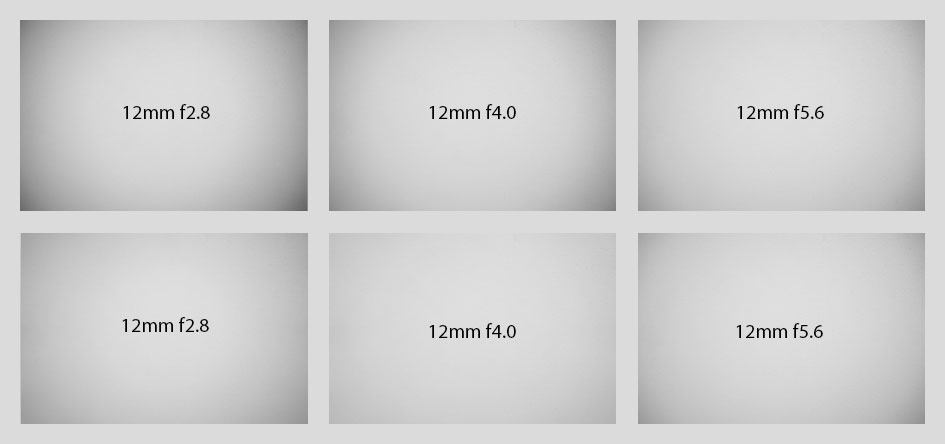
Above: Sony FE 12-24mm f2.8 GM at 12mm focal length
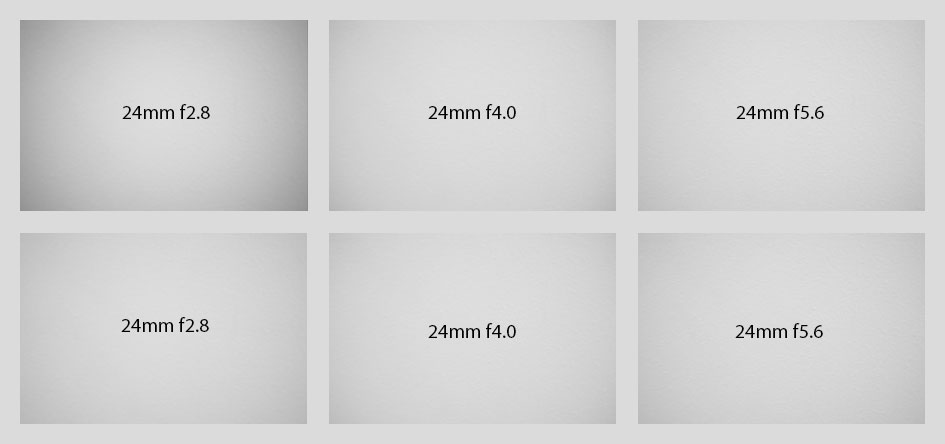
Above: Sony FE 12-24mm f2.8 GM at 24mm focal length
At 12mm uncorrected vignetting is strong at f2.8 and still very visible f5.6. At 24mm focal length vignetting is less strong wide open and negligible at f4.0. The lens profile reduces this to acceptable levels by lifting the extreme corners by about 1EV at 12mm f2.8 and by 2/3 EV at 24mm f2.8. Btw.: Adobe’s RAW converter automatically applies vignette control as it was set in camera – but you cannot alter the setting in postprocessing.
The setting for distortion control in camera is completely ignored by Adobe’s RAW converter and treated as Off. So you have to activate the profile that comes with the Adobe software manually to get rid of the distortions when developing RAW files. Just be aware though that activating Adobe’s lens profile also adds another lift in corner brightness – which can be reduced manually. Distortions are of a mustachioed barrel type at 12mm focal length which are not fully corrected by the lens-profile(s) and turn to slight pin-cushion at 24mm (see below).
Distortions: Sony 12-24mm f2.8 GM at 12mm, as is (top) / with lens-profile (bottom)
Distortions: Sony 12-24mm f2.8 GM at 24mm, as is (top) / with lens-profile (bottom)
Rendering of point-light sources at night-shots
Night-shots pose a different challenge for lenses as the contrast is even higher than under bright sun and point-light sources can reveal some weaknesses such as coma, haloing and colour-aberrations that do not show up as prominently in other test-shots. The 100% crops below the main image show the effect of coma in the FF-corner at various apertures:
Above: Sony 12-24mm f2.8 GM at 12mm, f2.8; click image for 4k version, here for large original

Above: Sony 12-24mm f2.8 GM at 12mm; 100% crops from the FF-corner at f2.8 (left), f4.0 (middle), f5.6 (right)
Above: Sony 12-24mm f2.8 GM at 23mm, f2.8; click image for 4k version, here for large original

Above: Sony 12-24mm f2.8 GM at 23mm; 100% crops from the FF-corner at f2.8 (left), f4.0 (middle), f5.6 (right)
The lens shows no coma at the short end and only a little at 24mm focal length. For comparison have a look at the Sigma 14-24mm f2.8 DG DN Art or Sony FE 12-24mm f4.0 G.
Bokeh quality
This test is for the rendering of point-light sources in an out-of-focus background. The circle of confusion that is produced by this test is pretty indicative of Bokeh performance (in the background) and light fall-off. Ideally the out-of-focus image of the point-light is evenly lit and perfectly circular, with no “onion-rings”, and without coloration. Large aperture lenses normally produce an effect known as “cat’s eye” the further away from the optical axis the point-light is projected. This is due to optical vignetting in the lens barrel when light enters the lens from an angle.
The following crops at f2.8 and f4.0 are from near the center, APS-C-corner, and FF-corner resized to make them comparable across all my reviews.
Above: Sony FE 12-24mm f2.8 GM at 23mm, f2.8; click image for 4k version
Above: Sony FE 12-24mm f2.8 GM at 23mm, f2.8

Above: Sony FE 12-24mm f2.8 GM at 23mm, f4.0
The Sony FE 12-24mm f2.8 GM produces Bokeh balls with some outlining but a relatively smooth interior and its cat’s eye effect is almost non-existent – comparable to the Sigma DN. The Sony f4.0 G has quite prominent outlining plus another onion ring inside which all makes for a busy Bokeh ball.
Now let’s see how this analysis of out-of-focus point-light sources translates into Bokeh-performance shooting a book-shelf. Crops are from the foreground, middle-ground, and background resized to make them comparable across all my reviews.
Above: Sony FE 12-24mm f2.8 GM at 24mm, f2.8
Above: Sony FE 12-24mm f2.8 GM at 24mm, f2.8; click image for 4k version, here for large original

Above: Sigma 14-24mm f2.8 DG DN Art at 24mm, f2.8; click image for 4k version, here for large original

Above: Sony FE 12-24mm f4.0 G at 24mm, f4.0; click image for 4k version, here for large original
The Sony FE 12-24mm f2.8 GM produces a Bokeh that is a little softer than from the Sigma DN while the Sony f4.0 G clearly suffers from its lowly f4.0 focal ratio in this comparison. Looking at another crop (now at 100%) from the same image showing the ruler reveals that the the Sony f2.8 GM suffers a bit more from double contours on fine structures near the plane of sharpest focus than the Sigma 14-24mm f2.8 DG DN Art or Sony f4.0 G.
Above: Sony FE 12-24mm f2.8 GM at 24mm, f2.8; click image for 4k version, here for large original

Above: Sigma 14-24mm f2.8 DG DN Art at 24mm, f2.8; click image for 4k version, here for large original

Above: Sony FE 12-24mm f4.0 G at 24mm, f2.8; click image for 4k version, here for large original
Flare, ghosting, and sunstars
Catching a strong light-source shining directly into the lens is always a risky business: it could produce strange colorful ghost-images or reduce contrast considerably through flare and glare. The appearance of flare and ghosting depends on factors like the aperture and the angle of the light hitting the lens. So to judge the proclivity of the Sony FE 12-24mm f2.8 GM for these artifacts I went through a series of well calculated shots against a strong light source to provoke glare and ghosting. Following are two typical example results. The little bright square inset in the upper left shows the respective area with an exposure compensation of +3 EV to make it easier to see which levels of black the lens renders at that point:
Above: Flare and ghosting. Strong light hitting the Sony FE 12-24mm f2.8 GM at 24mm, f11; click image for 4k version or here for +3 EV exposure compensation
Above: Flare and ghosting. Strong light hitting the Sony FE 12-24mm f2.8 GM at 12mm, f11; click image for 4k version or here for +3 EV exposure compensation
The Sony FE 12-24mm f2.8 GM produces some muted ghosting artifacts and flares but overall contrast is pretty high with deep blacks – better than the Sony f4.0G, but the Sigma 14-24mm f2.8 DG DN Art is better still. And there’s quite a flare which occurs at a very narrow angle when the light-source is just outside the corner. Sunstars are well defined at f11, better than from the Sigma DN or Sony f4.0 G.
Next check out my sample images!
Check prices on the Sony FE 12-24mm f2.8 GM at B&H, Adorama, WEX or Calumet.de! Alternatively get yourself a copy of my In Camera book or treat me to a coffee! Thanks!
